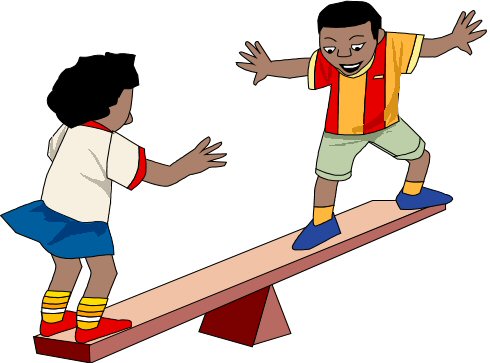Simplicity and Success

Creating Simplicity and Success In Life and Work
"Find what you really care about, and live a life that shows it!" -- Kate Wolf
Transformation? Or Oscillation?
People, today, seek both simplicity and success. Downshifting. Cashing out. Living simply. Pundits such as Faith Popcorn tell us these trends are “hot.”
Fetzer Institute researcher Paul Ray estimates that twenty-four percent of US adults—forty million people, sixty percent of whom are women—are already “Cultural Creatives,” strong advocates of self-creation, spirituality, ecology, and simpler lifestyles.
“The transformation,” claims Ray, “is happening right in front of our eyes.”
But wait! Haven’t we heard such predictions before.
Yes. In the seventies, Harris polls claimed that most Americans wanted to consume less and preferred non-material pleasures.
A 1976 Stanford Research Institute (SRI) report speculated there could be ninety million individuals practicing “voluntary simplicity” by the year 2000. “(A) major transformation,” the authors suggested, could occur “in the coming decades.”
However, instead of the predicted transformation, interest in simplicity quietly ebbed away. In its place, we got the eighties, a decade of unbridled greed, competitive consumption, and “looking out for #1.”
Confused about how to create both, people often oscillate between simplicity and success. Although such oscillating behaviour confuses both pundits and simplicity seekers, it shouldn’t surprise us. “Again and again,” says David Shi in The Simple Life, “Americans have espoused the merits of simple living only to become enmeshed in its opposite.”
Now, simplicity is hot again. It will get hotter as political and economic uncertainty grows. However, we’d do well to ask, will it last?
This time, will we turn vision into reality? Can we create both simplicity and success?

Simple Living: A Personal Odyssey
I’ve been asking that question since the early eighties when I noticed myself oscillating between a desire for simplicity and a desire for success.
I started living simply in the mid-seventies. A disgruntled high-school teacher, I lucked into a job developing an experience-based environmental education program for a new outdoor center in the Rockies.
Inspired by SRI’s "Voluntary Simplicity (3)" report and eager to participate in the coming transformation, I happily lived in teepees and camp trailers and made do with few possessions. I lived simply because it was the most direct way to live my new earth-friendly values and because environmental education didn’t pay well. When I left the centre for a teaching job at a west coast university, I found it much harder to walk my talk.
Instead of teaching experiential education, cutbacks forced me to supervise student teachers in conventional classrooms. I hated it. I came home tired and frustrated. As joy and meaning in work went down, spending went up.
Going to a restaurant or sending for pizza was easier than cooking. Buying a bottle of wine, a record, or a book would ease my bad feelings for a few days or hours. No longer forced to make do, do without, or do something else as I’d done on a low income, I purchased pleasures rather than created them. While I espoused the value of simple living, the trajectory of my life swung away from acting on my values.
Why, I wondered, did I seem to have so little control over my own actions?
After two years, I left the university, moved to a little island, and spent the winter writing. I traded handyman work for a small cabin and lived on $500 a month to show myself that I could live simply. I wasn’t very handy and the job only lasted until spring.
So I left the island and became an associate of the Action Studies Institute, a think tank that developed high-level action skills for individuals, business, education, and government.
Over the years that followed, although I lived a simpler life than most of my contemporaries, I oscillated between my desire to live simply and my desire to craft a successful career. Sometimes my life was simple and uncluttered. Sometimes it was complicated and stressful.
Oscillating between the two states confused me. So did the behaviour of those who abandoned the simple life in the eighties to join the orgy of upscale consumption that characterized that “decade of greed.”
To counteract the despair I felt as I watched the simplicity trend ebb away, I read and re-read the classics of the simplicity and self-help literature. They inspired me. They motivated me. They validated my ideal of a simple life. However, they didn’t help me build momentum toward the kind and quality of life I truly wanted.
I'd try, make progress, and then slip back. I used willpower, guilt, and positive thinking to force myself to practice what I preached but I felt as if I was swimming upstream.
Why, I added to my list of questions, could I not consistently walk my talk?
How, I wondered, did people make real and lasting change?
Throughout the late eighties and nineties, I devoted myself to exploring these questions. My Action Studies project involved researching the generic skills underlying practical creativity. What skills and structure, I wondered, underlay the ability to create?
Many experts described “creativity” as an inborn attribute, a gift from God to a special few. Others believed it was a breakthrough process to higher consciousness. Some associated it with mental illness. Others suggested that well-placed kicks or whacks to vulnerable body parts led to creativity. None of these explanations satisfied me.My understanding of generic skills convinced me there must be basic skills and principles that applied to any act of creation.
In 1985, when I discovered The Path of Least Resistance by Robert Fritz, the title put me off. However, the subtitle, Principles for Creating What You Most Want to Create, intrigued me.
I was delighted to find that Fritz’s approach was not about taking the easy way out. Nor was it about “creative thinking” or “creative problem-solving.” It was about the act of creating.
Fritz showed how, by using a common form or structure—an organizing framework and set of generic skills—creators consistently bring into being real and lasting results, in spite of the problems and circumstances they face.

Structure: The Key to Real and Lasting Simplicity
"Structure influences behavior." — Peter Senge
Just as water follows a path of least resistance laid down by the shape and structure of a stream bed, Fritz argues that our own energy and action follow a path laid down by the structures underlying our lives.
In some structures, the path of least resistance leads to what we want; in others; it does not. In some, we advance toward desired results; in others, we oscillate.
Our life structures result from the way we arrange the relationships between our perceptions, ideas, values, beliefs, desires, fears, and external reality itself. If we’re not aware of these relationships, it’s easy to get stuck in structures that don’t support our most important values and desires.
Either/or structures, for example, give rise to oscillating patterns of behaviour. Moreover, there is a fundamental difference between the structure of problem-solving and the structure of creating — and between the kind and quality of results those structures produce.
Most problem-solving focuses on the intensity of a problem. Thus, it merely relieves the feelings associated with the problem. Taking aspirin provides relief from the pain of a stress headache but does nothing to change the behaviour that caused the stress, or the structure that caused the stress-producing behaviour.
Relief gives us the illusion that the problem is “solved.” It allows us to keep doing what caused the stress and the pain. When the aspirin wears off, the pain returns. We’re back where we started, or worse, well on our way to ulcers.
So, “why not just solve the stress?”
Again, because this kind of problem-solving focuses on the intensity of the problem, the same pattern unfolds. If we relieve the stress but don’t change the structure that gives rise to it, we keep doing what caused it in the first place. Research shows that stress management programs can turn chronic burnout into acute breakdown by teaching people to cope with ever-increasing amounts of stress until they break.
By shifting our focus from solving problems to creating desired results, Fritz shows how to set up structures that guide energy and action toward what we most want. Instead of taking aspirin or solving stress, we can create structures that lead to stress free lives and work.
From Problem-Solving to Creating
Grasping the impact of structure on my behaviour changed everything. Recognizing the difference between problem-solving and creating made a huge difference in my approach to simple living and self-creation. I saw that a rich and simple life was not a solution to a problem, but rather a creation to bring into being.
Over the next nine years, I studied and worked with Robert Fritz. I taught his approach to thousands of participants and hundreds of organizations. Using the principles of creating, I found it easier to transcend the either/or, problem-driven strategies that underlie so many quick-fix self-help and simple living approaches.
Using his approach, I wondered, “Could I integrate simplicity and success? Could I create a simple yet rich, engaging, and successful life—and sustain it?”
As the eighties gave way to the nineties, interest in simple living grew. Paul Ray’s “Cultural Creatives” report claimed that many of us were already advocates of self-creation and simpler lifestyles. I hoped he was right. Still, I remembered the enthusiastic but faulty predictions of earlier pollsters.
Could the growing interest in simple living be sustained? Or would it again ebb away on a changing tide of public interest?
Embracing Complexity; Creating What Matters
As my understanding of structure grew, I realized why I’d oscillated.
I valued a simple, healthy, and sustainable life. I also valued “a good life” complete with challenging work, financial security, comfort, convenience, and respect.
Unconsciously, I’d arranged my values into a dichotomy of desires, an “either/or” structure in which I pitted a simple, sustainable life against a rich, engaging, and successful one.
In this simplicity vs. success framework, my values competed. Satisfying one increased the pull of the other. Attending to that value increased the pull of the first. Back and forth I swung, caught in an oscillating pattern generated by the unseen structure.
As I focused on getting rid of the frustration associated with that oscillation, and fought against the complexity it generated, I lost sight of the results I most wanted to create.
Eventually, I realized that there were two kinds of simplicity: voluntary (freely chosen) and involuntary simplicity (poverty). I also realized that there were two types of complexity.
Driven by unwanted problems, involuntary complexity leads to distracted effort and stress. Merely getting rid of (or relief from) what we don’t like and don’t want—clearing out clutter, for example—wastes precious life energy. Too often, it results in the reactive, temporary simplicity on this side of complexity.
Clearing the clutter out of our lives and homes brings us relief, but, by itself, it does not bring the results we long for.Life is simpler and more successful if we freely embrace and transcend complexity by creating what matters.
Voluntary complexity is freely chosen and focused. A potter throwing a thin-sided pot, a writer crafting a poem, or an entrepreneur growing a socially responsible business all experience complexity. However, because they embrace that complexity, it brings a focused simplicity to their tasks and to their lives.
Similarly, simplicity seekers who embrace life’s complexity as the raw material of creating can create the deep, lasting, and satisfying simplicity on the other side of complexity. If clutter-clearing is driven by a vision of a well designed space such as a meditation corner — because you’d love to have such a space in your life — the space you create will be clutter free and stay that way.
Although creating a meditation space is more complex than clearing out clutter, that complexity is also more engaging. A clear, compelling vision of a space you’d love to create not only motivates you, it helps build the momentum you need to follow through to completion.
Out of the gap between vision and reality, a useful, creative tension emerges. Creative tension is the engine of the creative process. You can use it to take actions that support your result.
By focusing on a vision of what you want while embracing reality as it is, you set up a framework that contains and guides the resolution of creative tension. You also avoid the stress that comes with fighting against what you don’t want. By working with the path of least resistance that forms between vision and reality, your actions naturally and easily flow toward what you want.
Creating Makes the Complicated Simple
As I shifted my focus to creating what matters, something remarkable happened. Not only was I able to create what I wanted, but my problems began to fade away. Carl Jung explained this phenomena when he said, “All the greatest and important problems of life are fundamentally insoluble…. They can never be solved, but only outgrown.”
Real change, he saw, resulted from a shift to a new level of consciousness. When patients embraced a more powerful interest, he explained, “the insoluble problem lost its urgency. It was not solved logically in its own terms but faded when confronted with a new and stronger life urge.”
By adopting a creating stance—by simultaneously focusing on what matters and embracing reality— simplicity seekers shift to a new level of consciousness and tap into one of life’s most persistent urges: the urge to create.
Creating, said jazz great Charlie Mingus, makes the complicated simple.
The creative process, freely chosen, is simpler yet more powerful than problem-solving. The structure — the framework — of creating includes and transcends problem-solving. Thus, creating is a more reliable and effective structure in which to create results that matter. The enduring results on which civilization rests (art, music, literature, science, etc…) were not solutions to problems. They were creations that someone loved enough to bring into being.
“All the great things,” said Robert Frost, “are done for their own sake.”
Simplicity AND Success: A Timely Offering for Challenging Times
Simplicity and Success comes at a critical time. Many of us, once again, hunger for a way to transcend the complexity that comes from coping with jobs, careers, children, ambitions, fears about retirement, and the desire to leave a lasting legacy.
Tired of seesawing between competing values, we are ready for a new approach, one that integrates values into an easy-to-manage whole.
Simplicity and Success speaks to those who want to integrate personal freedom with intimate relationships, career achievement with healthy families, and personal fulfillment with work that provides meaning, challenge, and grace. It also speaks to those seeking to integrate spirit and soul into their everyday lives and work.
Many of us are intuitively moving in this direction. For example, while browsing my local bookstore, I was surprised to find books on money displayed beside bestsellers on simplifying life and enriching the spirit.
“What kinds of people,” I asked my bookseller, “buy these different books?”
“The same people,” she said, smiling sweetly. I must have looked perplexed because she touched me gently on the arm and said, “There’s a convergence of interests, dear, a kind of shared vision emerging.”
It’s my hope that Simplicity and Success will help you realize your part in this shared vision. I hope it will reinvigorate the simplicity movement, and elevate simplicity-seeking to a new level of mainstream interest.
I hope it will provide critical next steps for the millions who have downshifted and millions more who contemplate doing so. It provides “simple-livers,” downshifters, and “the rest of us” with a way to align vision, values, and actions so we more naturally and organically walk our talk.
I hope itt will show you how to create results that honour who you are even as you strive to become the person you imagine yourself to be. And to enjoy the process.
The road to lasting simplicity and authentic success leads through new territory. To travel that road successfully requires new skills. We must master the higher-order skills to learn from our experience and to better apply the skills we already have. We need to:
• Understand the structure and dynamics of the creative process.
• Master the generic skills and practices common to all creators.
• Develop a life-long practice, a discipline if you will, of daily creating.
Together, these skills can empower and enable us to create—and sustain—the lives we most want. By mastering these skills, you'll greatly increase your chances of integrating simplicity and success, and creating what matters most. -
----------
Bruce Elkin is the author of Simplicity and Success: Creating The Life You Long For.
If you liked this hub, please give it a "thumbs up", below. And "share it" with others via Facebook, Digg, etc… Thank you!








